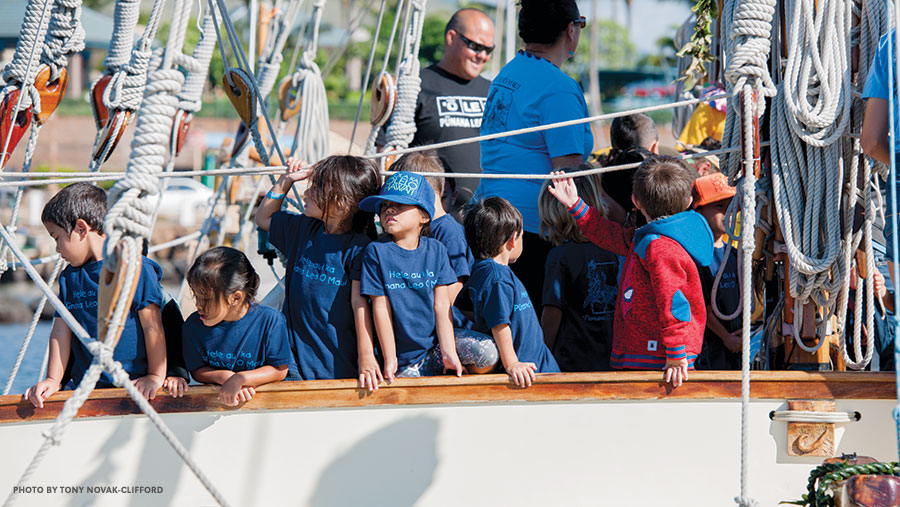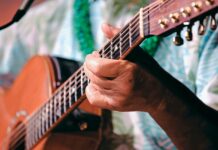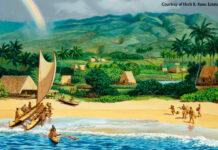
Over the next thirty-five years, Hōkūle‘a continued to serve as the living emblem of Hawaiian pride. In the course of sailing 150,000 nautical miles around the Pacific, her crew became an ‘ohana wa‘a (family of the canoe).
If Hōkūle‘a is considered the mother of that ‘ohana, Mau Piailug is its father.
One of the last remaining masters of celestial navigation, Mau agreed to travel from Satawal, Micronesia, to guide Hōkūle‘a on her 1976 voyage to Tahiti. He would become the teacher who restored Hawaiians’ knowledge of voyaging by the stars.
A tragic chapter in Hōkūle‘a’s history occurred in 1978, when the fearless Hawaiian lifeguard Eddie Aikau attempted to save his shipmates as they clung to the keel of the canoe after it capsized in gale-force winds and gigantic swells in the middle of the Kaiwi Channel between O‘ahu and Moloka‘i. Astride his surfboard, Eddie paddled toward Moloka‘i . . . with nothing but some oranges and a bag of poi tied around his waist. He would never be seen again, but his bravery was immortalized in the saying “Eddie would go.”
His loss left Hōkūle‘a’s crew afraid to sail and afraid to fail. Hope emerged through the determination of Nainoa Thompson, a young Hawaiian who had been part of the crew rescued from the overturned vessel. Nainoa had watched Eddie paddle away and was haunted by the reason the waterman had given for sailing on Hōkūle‘a: “I need to bring pride and dignity back to our kūpuna [elders] and give it to our children.”
Nainoa realized that the only thing more dangerous for Hawaiians than putting Hōkūle‘a back in the water was leaving the canoe—and the cultural honor she carried—tied to the dock. Encouragement to try again came from Nainoa’s father, Myron Thompson, in words that echoed Eddie’s dream: “The voyage is not about you. It’s about children not yet born who need this story.”
Compelled by this sentiment, Nainoa traveled to Satawal to find Mau Piailug and ask him to be his teacher. Though Mau spoke little English, he recognized that without a capable navigator, Hawaiians could not voyage safely. He also recognized that the knowledge a lifetime of experience had taught him was at risk of being lost, because the younger generation in Satawal was not interested in learning it. Bucking the tradition that this knowledge would remain within the family, Mau returned to Hawai‘i in 1979 and told Nainoa, “I will train you to find Tahiti, because I don’t want you to die.”





